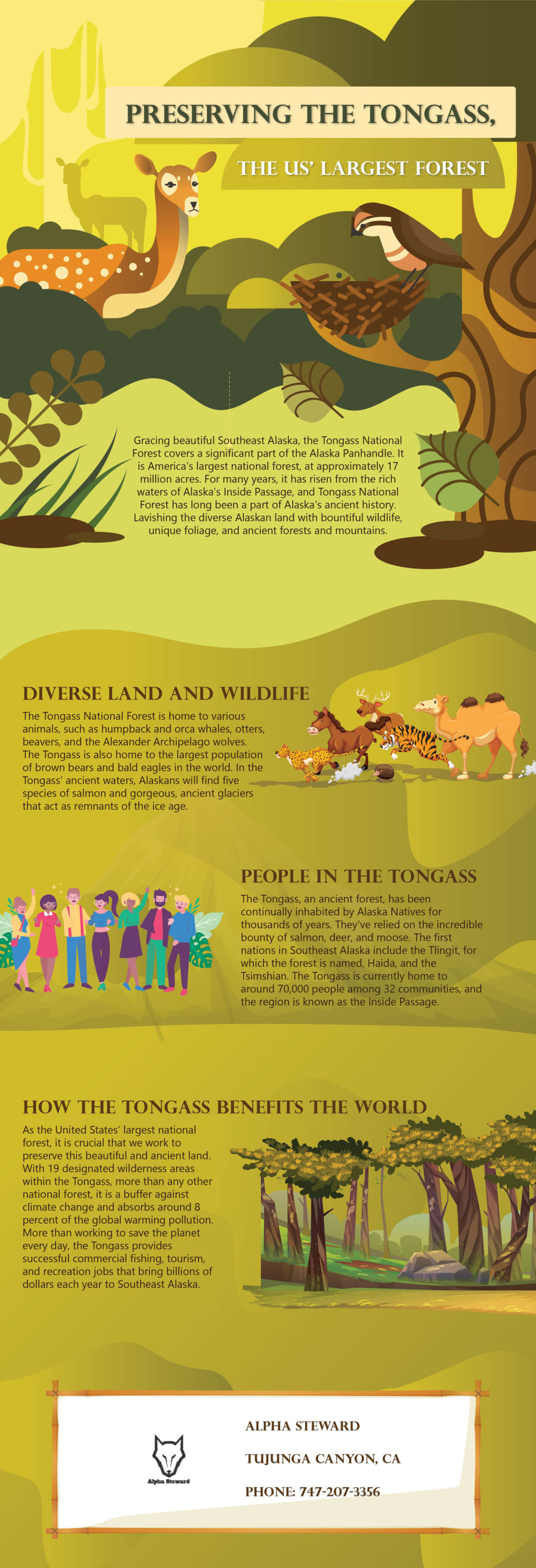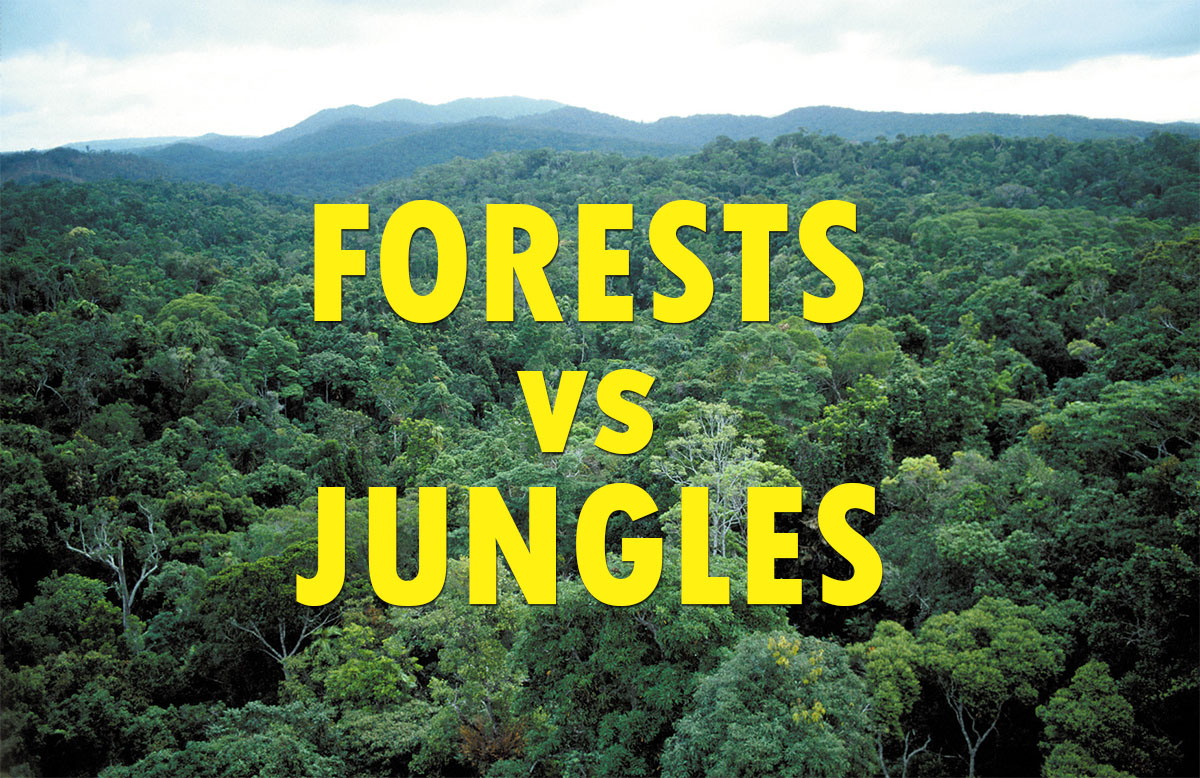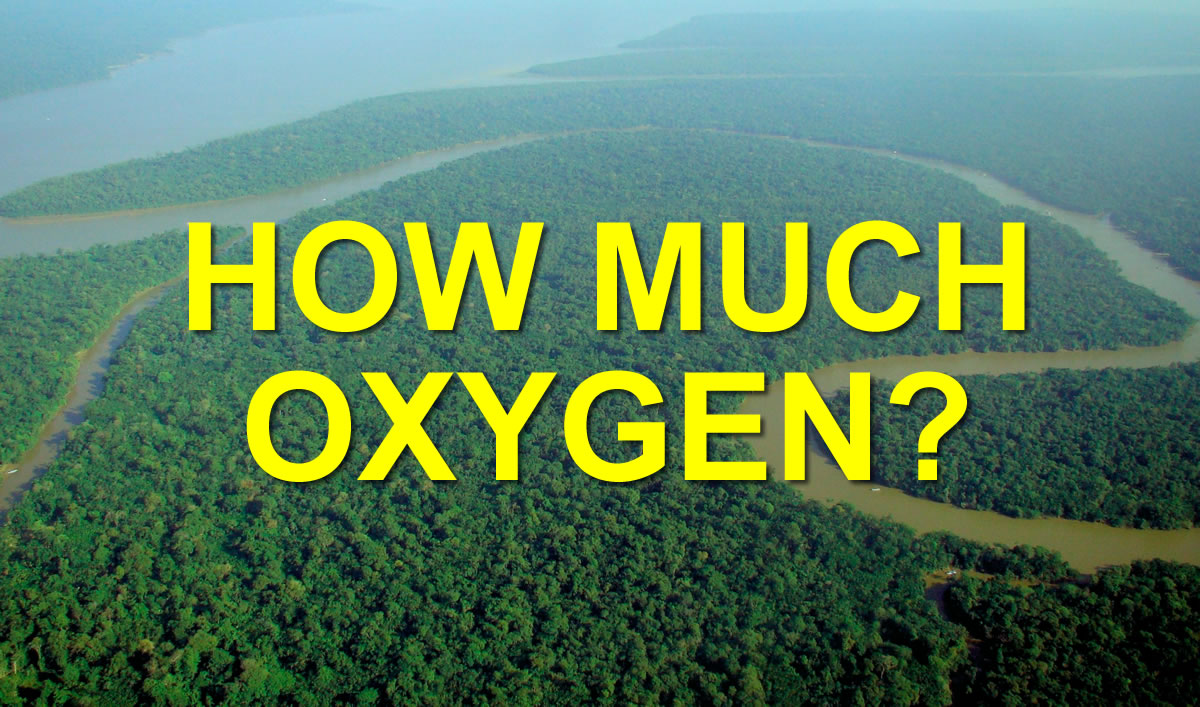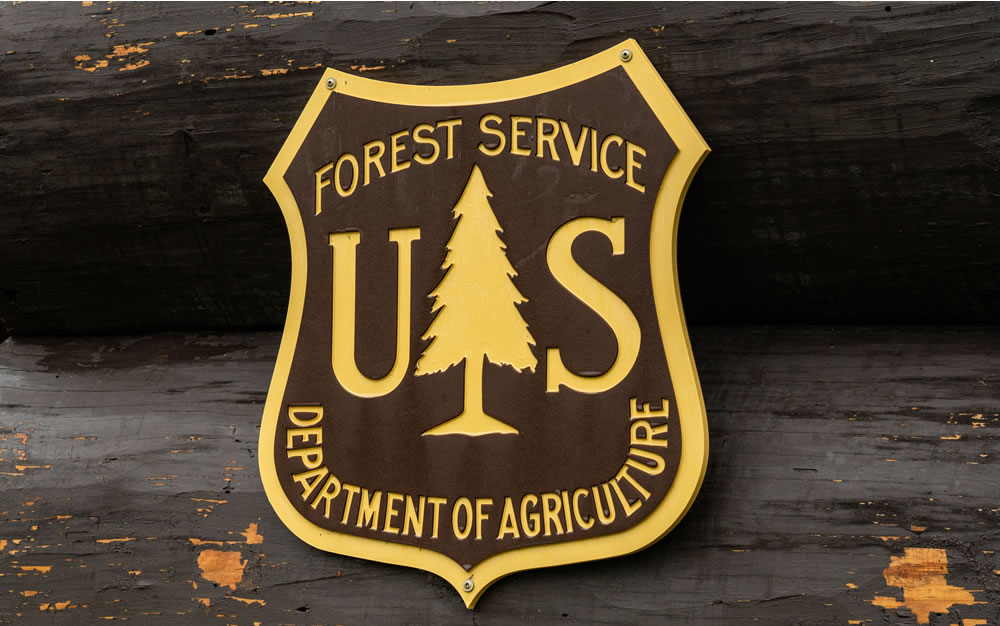The United States has a wealth of large forests, most of which are found to the West of the Mississippi River, stretching from Arizona to Alaska. The largest national forest is the Alaskan forest, Tongass. The monstrous and dense constellation of greenery covers almost 17 acres. It encompasses a vast majority of Southeast Alaska and the Alaskan Panhandle.
The forest is home to a wide array of species of wildlife like orcas, beavers, wolves, and brown bears. The Tongass National Forest is actually the location for some of the largest populations of bald eagles and brown bears (not to mention, the highest density of black bears) on Earth. In the forest are the Tongass glaciers, which are actual remnants of the last ice age, and the rich, rushing Tongass waters are home to five different species of salmon as well as countless other kinds of aquatic life.
Why is the Tongass National Forest so Large?
One major reason for the size of the Tongass is that it was once two forests (the Tongass and the Alexander Archipelago). President Theodore Roosevelt had made earlier proclamations establishing both areas as national forests. In 1925, the Tongass was expanded by President Calvin Coolidge.
Like other National forests, the Tongass is managed by the U.S. Forest Service. It spans 500 miles (800 km). 19 wilderness areas cover nearly a third of this forest.
Tongass National Forest Infographic






